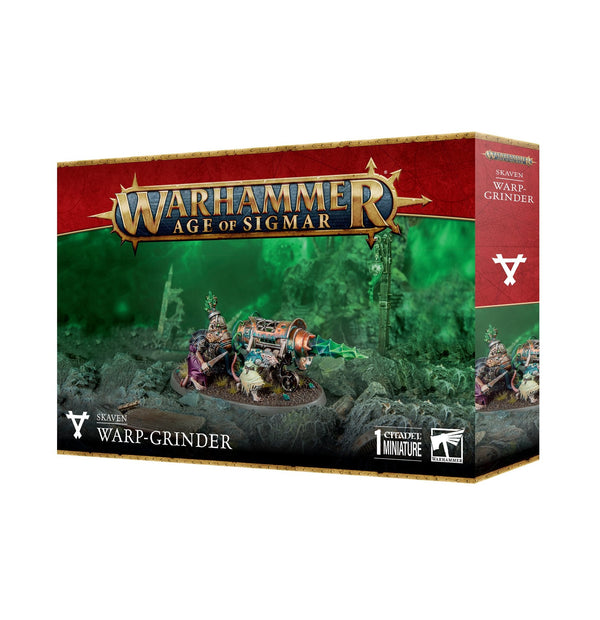Recommended Paint
Product title
Vendor
£19.99 | £24.99
Product title
Vendor
£19.99 | £24.99
Product title
Vendor
£19.99 | £24.99
Product title
Vendor
£19.99 | £24.99
Product title
Vendor
£19.99 | £24.99
Product title
Vendor
£19.99 | £24.99
Product title
Vendor
£19.99 | £24.99
Product title
Vendor
£19.99 | £24.99
Product title
Vendor
£19.99 | £24.99
Product title
Vendor
£19.99 | £24.99
Product title
Vendor
£19.99 | £24.99
Product title
Vendor
£19.99 | £24.99
Product title
Vendor
£19.99 | £24.99
Product title
Vendor
£19.99 | £24.99
Product title
Vendor
£19.99 | £24.99
Product title
Vendor
£19.99 | £24.99
Key Features:
- A bizarre creation of the Clans Skryre for your Skaven army
- The warpstone drill is capable of boring a hole through reality itself, not to mention any enemies that get too close
- Crewed by a pair of lowly acolytes, and operated by a Warlock
A Warp-Grinder is an arcane reality-boring machine. Manoeuvred by straining thralls and operated by Warlocks who have taken their obsession with undermining their foes to terrifying extremes, these bulky constructs project powerful – if erratic – blasts of energy to open gnawholes, and tunnel into vulnerable regions of a battlefield to allow screeching warrior swarms to set upon enemies from quarters unforeseen.
This multipart plastic kit builds a large drilling machine operated by a team of Skaven, and it opens up new tactical options for your army. Tunnel under enemy lines and unleash the power of a warpstone drill upon your enemies. The kit has plenty of options for the Warp-Grinder and its crew, making it easy to personalise your war machines.
Product title
Vendor
£19.99 | £24.99
Product title
Vendor
£19.99 | £24.99
Product title
Vendor
£19.99 | £24.99
Product title
Vendor


